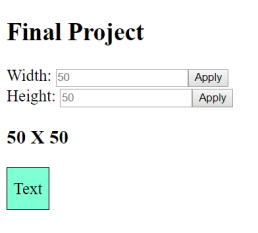My final project has not been an easy task to deal with thus far. After going far in depth with one of my designs, I came to discover that the use of angular material alongside bootstrap which caused quite a few problems. I have decided to do a full overhaul into angular material. The reason I am choosing angular material is because there seems to be more typescript capabilities while bootstrap seems to be heavy on javascript and css. By going down this path I have been able to make steady progress with my current version of my application which at the time is mostly an interactive sidebar. The main concern I will have this week is being able to make the workouts appear on the home page. I would like to be able to use angular to create a visually appealing layout which will allow for the user to go through the different workouts and select the ones that they would like to use. If I was able to have more time on something like this my end goal would be to add in I/O devices such as being able to print your workout after it has been created. Due to time restraints I will have to remain with simply being able to select and track the wanted workouts on the app. Another large problem I will have to come up with a solution with is whether or not there will be a way to save workouts, or have the workouts appear and when the next desired workout regime is needed, to simply delete the old and then add to the new one. Another issue I have run into is being able to seamlessly add in new workouts to the app without having any effect on the previously existing workouts. This next week will be the time to grind out any and hopefully all of these problems. I have been diving deeper into angular material in order to get a better understanding. I have also been researching more html and css as I have not had much prior experience with these. This has caused me quite a bit of stress because very minute changes have broken the entire app, but I believe that by completing this I will have gained the necessary knowledge of what will be needed in the future. I am excited to complete this app but it is also been an extremely difficult time which will all pay off in the end.
From the blog CS@Worcester – Journey Through Technology by krothermich and used with permission of the author. All other rights reserved by the author.




